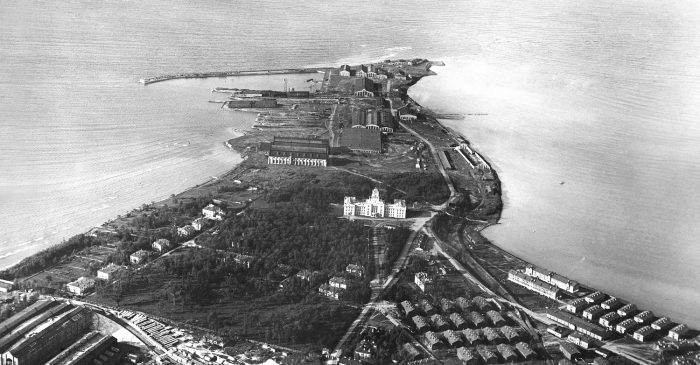
KOPLI SONATA. THE RUSSO-BALTIC SHIPYARD
Floor
06.05. – 03.09.2017
Kopli – perhaps the most intriguing municipal district in Tallinn, the contradictory reputation and past of which has given birth to many city legends – appears to be at the threshold of important changes. This year marks the passing of 105 years since the founding of the Russo-Baltic Shipyard built at the tip of the peninsula, one of Tallinn’s mightiest industrial enterprises. According to the curator of the exhibition, the architecture historian Oliver Orro, it is appropriate on this occasion to look back in time and explore how Estonians have over the course of the past century tried to manage with the large-scale heritage of the tsarist empire: “The touch of the great currents of history can be felt in Kopli, perhaps at first glance unattractive with its somewhat run-down and worn appearance, and a great challenge for the future can be anticipated as well. This makes Kopli fascinating.”
This exhibition considers the development and importance of the architecture and settlement of the Russo-Baltic Shipyard in the history of our urban development and industrial heritage. The Russo-Baltic Shipyard began operation in Kopli, Tallinn in 1913. This is one of the most monumental industrial complexes of the early 20th century in the entire Baltic Sea region. In addition to immense docks and shipbuilding basins, a number of limestone production buildings and a mighty main building with art nouveau attributes were built, and an extensive factory settlement was constructed together with a service network. The famous architect and academician Aleksandr Dmitriyev headed the design of the entire complex. Problems arose in utilising large production buildings in the era of the independent Republic of Estonia already. Efforts were made to turn the workers’ residential area into a contemporary, well-ordered district. Kopli gained a modern community centre and a school. After the restoration of Estonia’s independence, the factory has continued as a ship repair enterprise. The Estonian Maritime Academy now operates in the former main building. The former factory settlement is no longer connected to the enterprise and that part of the settlement consisting of workers’ housing that is known under the name of the Kopli Lines has since the 1990s proven to be one of the most problematic districts in Tallinn. Many buildings that have been left vacant have burned down by now or stand in ruins. The original, integrally planned structure of the factory settlement is perishing to a great extent.
In recent years, many important changes have taken place in Tallinn’s development. Districts of wooden housing and former industrial areas have become highly desirable residential and commercial districts and it is only a question of time before the construction boom spreads from Kalamaja to the Kopli Peninsula. The exhibition introduces the potential of Kopli’s industrial areas to become a contemporarily designed physical and social environment.
Unique archival drawings from archives in both Estonia and St. Petersburg are on display at the exhibition, along with extensive historical photographs. Martin Siplane has photographed present-day Kopli, its industry and residential buildings for the exhibition.
Curator: Oliver Orro
Exhibition design: Joel Kopli, Koit Ojaliiv, Juhan Rohtla (KUU Architects)
Graphic design: Triinu Silla
Present-day photographs: Martin Siplane
We thank: Aldo Mett, Kristo Kooskora, Robert Treufeldt, Roman Matkiewicz, Kalev Kiviste, BLRT Group, RT Group, Apex Architectural Bureau, Professors’ Village Association, Estonian History Museum, National Archives of Estonia, Estonian National Museum, Estonian Maritime Museum, Estonian Health Care Museum, Estonian Firefighting Museum, Central Naval Warfare History Archives in St. Petersburg, Russian National Library in St. Petersburg, St. Petersburg City History Museum, Tallinn City Museum, Tallinn’s Urban Planning Bureau, Tallinn City Archives, Tallinn University Academic Library Baltica Department, Estonian National Library, Estonian Maritime Academy
The exhibition was supported by: Estonian Cultural Endowment, Ministry of Culture of the Republic of Estonia


